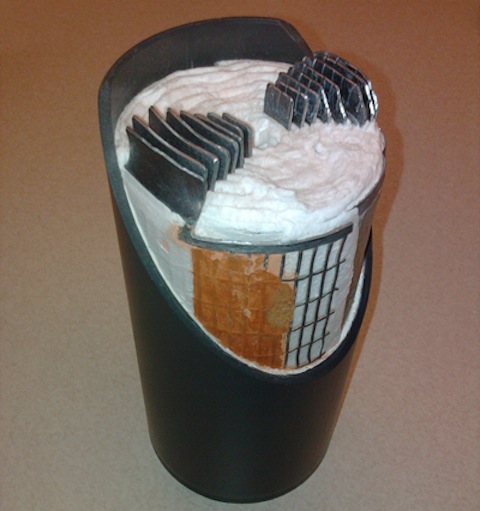
The Cyclon is a type of Sealed Lead Acid battery (but often referred to as Pure Lead Batteries) and was actually the first SLA battery commercialized when it was patented in 1972 by Gates Rubber Corporation (See History of the battery). Whereas previous flooded lead acid batteries had rectangular flat plates placed in an acid bath that could leak if tipped this new type had spiral plates with the acid held in an Absorbent Glass Mat.
The older flat plate design also had another drawback. Lead, the metal needed to make the plates, is soft and was prone to buckle when the battery was placed under heavy loads. This caused the active paste applied to the plates to shed off shortening the life of the product or caused the negative and positive plates to touch each other which shorted out the battery rendering it useless.
To counter this other alloys were mixed with the lead to fortify the plates but it meant they were larger than technically needed. Winding the plates into a spiral and using absorbent glass mats to hold them in place (and keep them in shape) meant extremely pure grades of lead could be utilized resulting in smaller batteries.
This purity of lead means the units are often called Pure Lead batteries.
Later sealed lead acid batteries appeared using rectangular plates similar to automotive units but with an absorbent glass mat which meant they also did not leak when placed at an angle.
However the rectangular batteries are rarely referred to as “Pure Lead”.
Cyclon batteries, due to their compact nature, are a popular choice of Emergency Lighting battery and have applications in Programmable Logic Controllers (PLC), Computer Numerical Controllers (CNC) and Alarm Systems. However the cost of refining, winding and injecting acid into mats make the cyclon design more expensive so even to this day flooded lead acid batteries remain popular – especially in the automotive and leisure industries.
See also:


Leave A Comment?